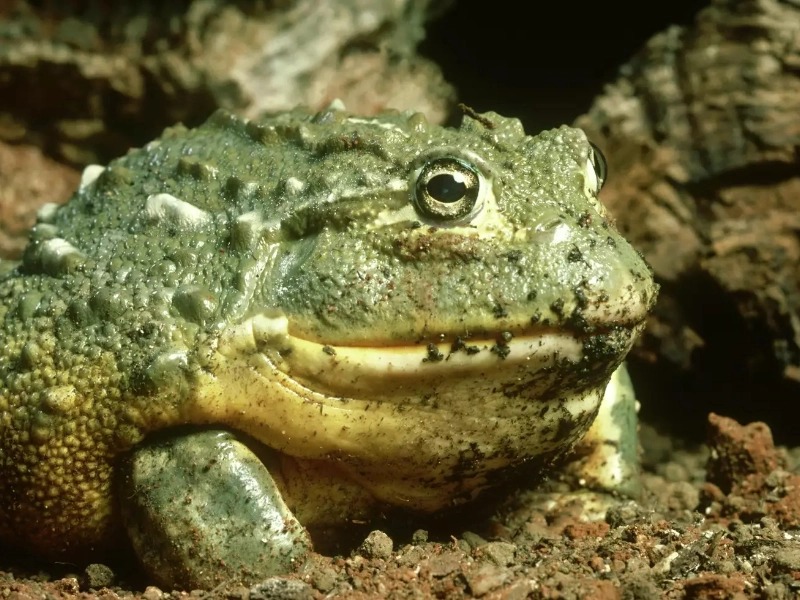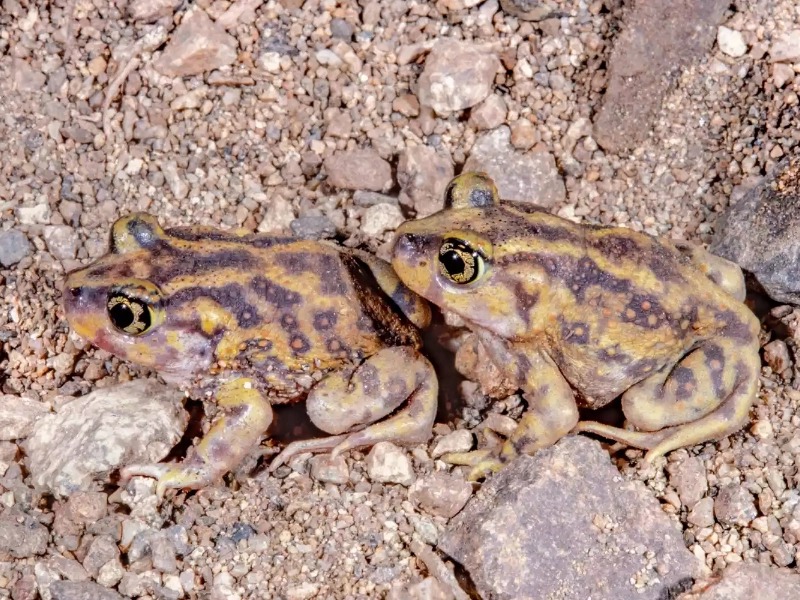
17 Animals Amazingly Adapted to Thrive in Deserts
By • Last Updated12. Couch’s Spadefoot Toad

The Couch’s spadefoot toad (Scaphiopus couchii) is a remarkable amphibian uniquely adapted to thrive in the arid deserts of North America. Its specialized life cycle and behavioral adaptations enable it to survive in an environment characterized by prolonged drought and limited water availability. One of the most fascinating traits of Couch’s spadefoot toads is their ability to enter a state of estivation, a form of dormancy that allows them to endure harsh conditions.
During dry months, these toads spend most of their time underground, where they can aestivate for eight to ten months. This dormancy is a crucial adaptation, conserving moisture and energy while providing protection from the intense heat and desiccation of the desert environment. Remarkably, if conditions remain extremely dry, they can stay buried for over 20 months.
As the rainy season arrives, Couch’s spadefoot toads emerge from their burrows to take advantage of newly formed ponds and temporary water sources. Timing is critical, as they must reproduce before the ponds dry up. Females can lay their eggs within the first two days after emerging, and the tadpoles can hatch in as little as 15 to 36 hours. This rapid life cycle is essential for survival in the desert, where water bodies can evaporate quickly. The tadpoles transform astonishingly fast into adult toads in as little as nine days, enabling them to capitalize on fleeting water supplies.
Once they awaken from aestivation, Couch’s spadefoot toads exhibit a voracious appetite, primarily feeding on insects. This aggressive feeding behavior maximizes their food intake during the brief window when conditions are favorable, allowing them to build energy reserves for the next period of dormancy.
In addition to their behavioral adaptations, Couch’s spadefoot toads possess physical traits that enhance their survival in desert habitats. Their spade-like hind feet are specifically adapted for digging, allowing them to burrow quickly into the ground. This adaptation is vital for both estivation and evasion from predators.
Overall, the Couch’s spadefoot toad exemplifies the incredible adaptability required for life in the desert. Its unique life cycle, estivation behavior, and feeding strategies highlight the resilience of this species in one of the planet’s most challenging environments. Understanding these special adaptations is crucial for the conservation of Couch’s spadefoot toads and the protection of the delicate ecosystems they inhabit, especially as habitat loss and climate change continue to threaten their survival.